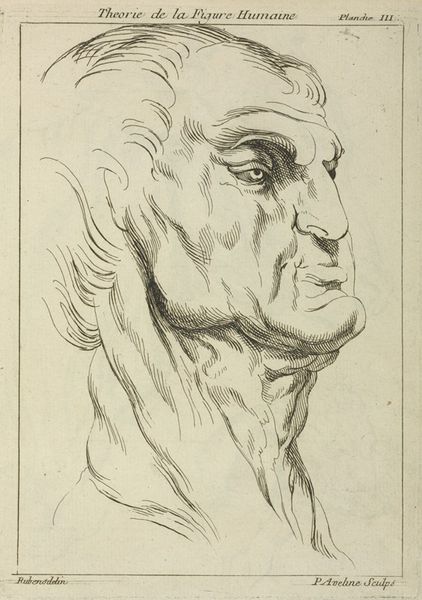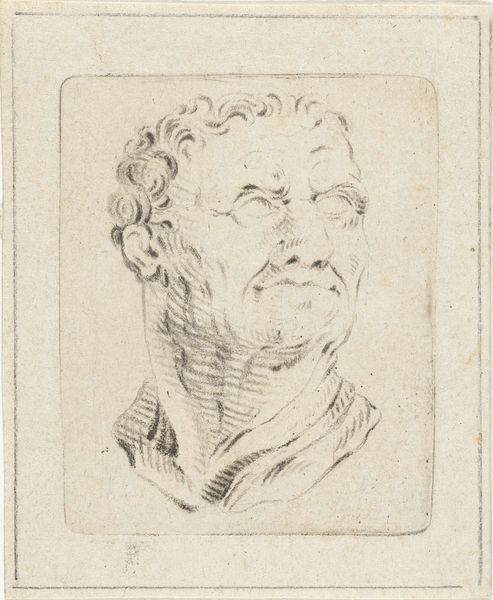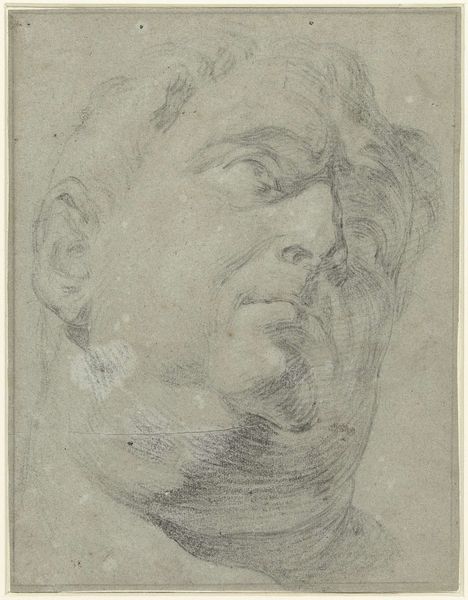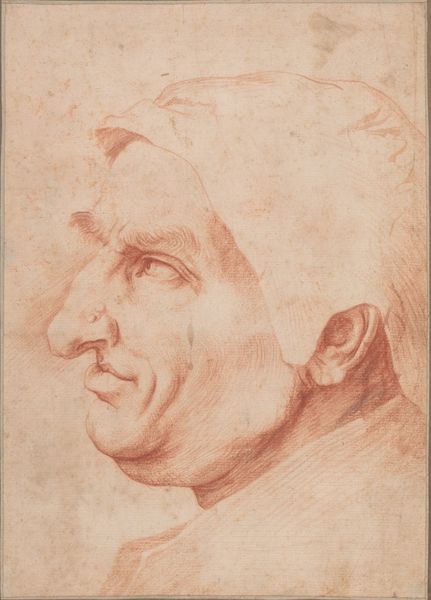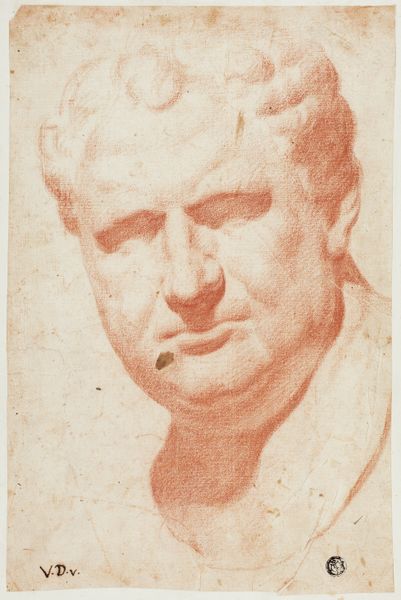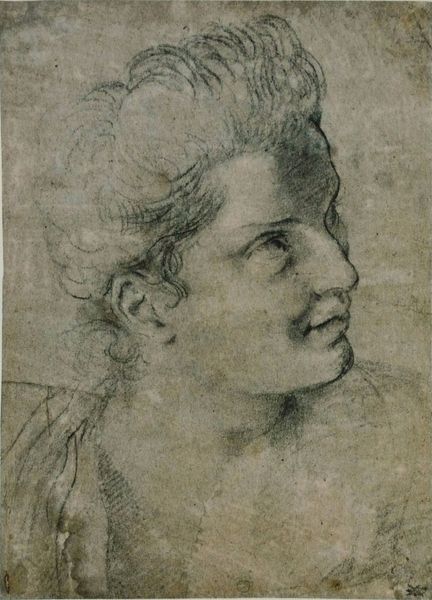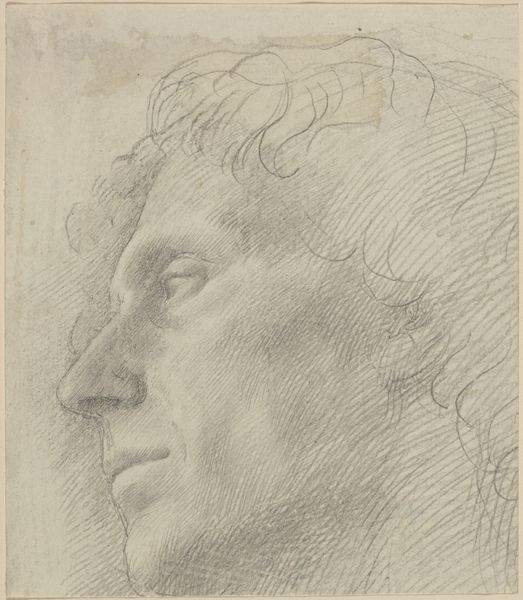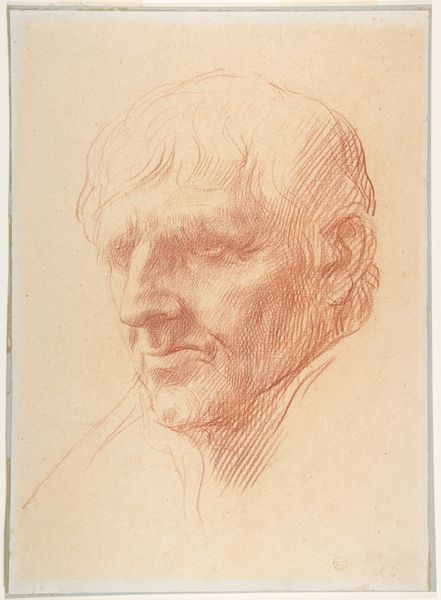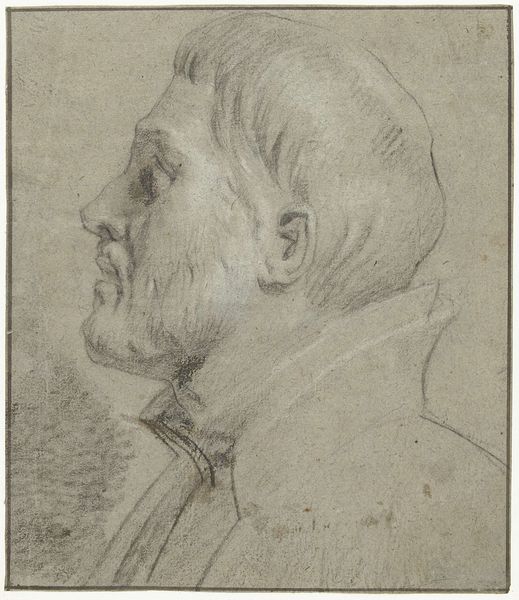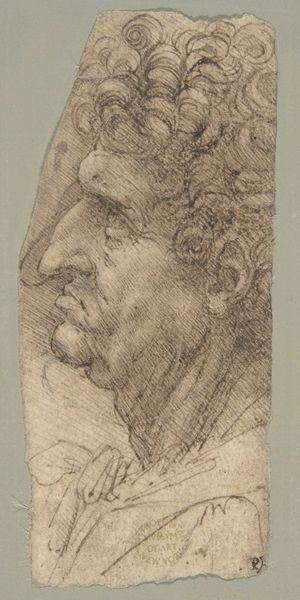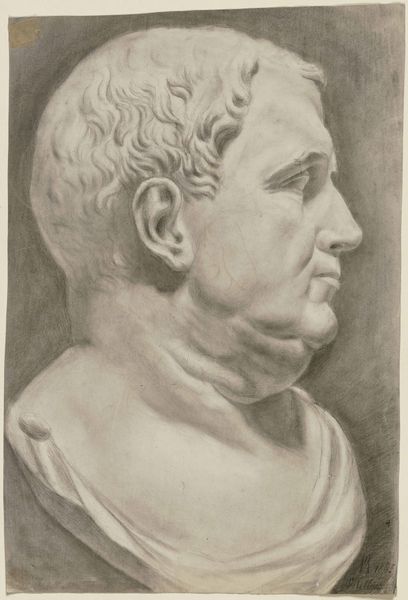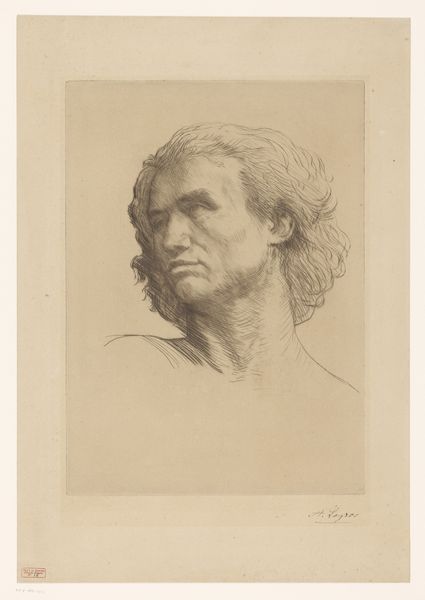
drawing, graphite
#
portrait
#
pencil drawn
#
drawing
#
baroque
#
pencil sketch
#
charcoal drawing
#
pencil drawing
#
graphite
#
portrait drawing
Dimensions: height 228 mm, width 174 mm
Copyright: Rijks Museum: Open Domain
Curator: Welcome. Today we’re looking at Gerard ter Borch the Younger’s drawing, "Buste van keizer Vitellius," made around 1631-1633. It resides here at the Rijksmuseum. Editor: A compelling portrait—it captures a gravitas but rendered with what looks like effortless grace, as if it were quickly sketched from life. There's an imposing three-dimensionality considering it's just graphite on paper. Curator: It is striking. It exemplifies Ter Borch's mastery of line and shading to achieve volume and texture with minimal tools. This piece provides insights into workshop practices of the period, especially considering that drawing was the basis for painting in the Baroque era. Editor: Absolutely. Note how he masterfully models the emperor’s face with the play of light and shadow, particularly the dark hatching behind the subject to emphasize contrast. It suggests weight, a material presence, through mere tonal variation. Curator: And the choice of Vitellius is itself intriguing, no? What drew Ter Borch to this short-reigned and notoriously gluttonous emperor? This could be read as commentary on leadership, on excess, perhaps a subtle reflection of societal values in the Dutch Golden Age. Editor: Or, less drastically, could we just be admiring the sheer skill of rendering a complex form in a minimalist style? There's an inherent tension in using something as unassuming as a pencil to mimic sculpture. Its cool-toned surface offers a sharp depiction, capturing the cool nature of leadership in the ancient reign. Curator: Perhaps it's both. The genius here is how the technique itself enhances the symbolic weight. I think about who had access to create and view such images, and it shifts to reflect an economy of artistic practice during this period, particularly in relation to those ancient models. Editor: Good point. Seeing the piece alongside Ter Borch's more well-known genre paintings enriches our sense of his skill across different media. It’s a strong reminder that formal study often underpins creative originality. Curator: Indeed, a glimpse into artistic practice deeply rooted in cultural contexts. Editor: Yes, and also an enduring object worthy of our sustained gaze, an act of looking and re-looking is rewarded in pieces like these.
Comments
No comments
Be the first to comment and join the conversation on the ultimate creative platform.
